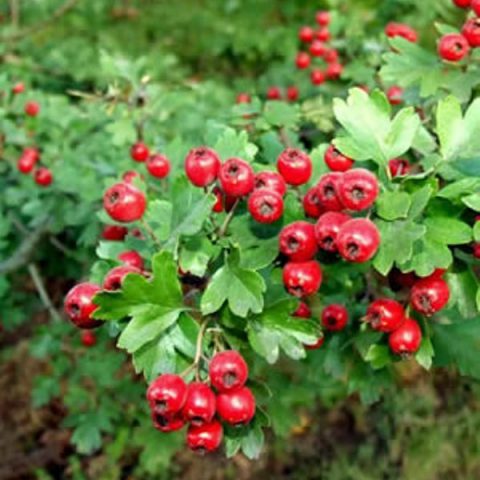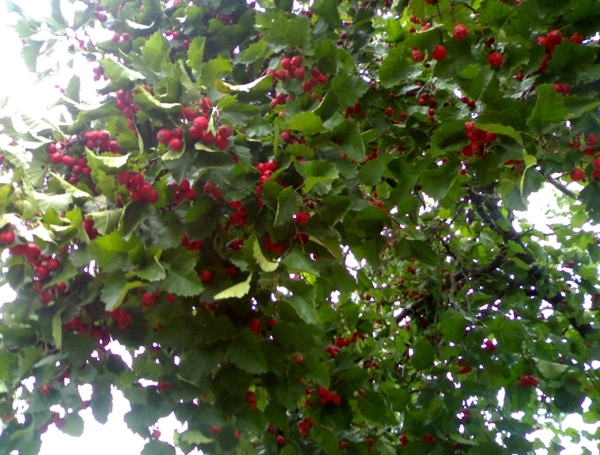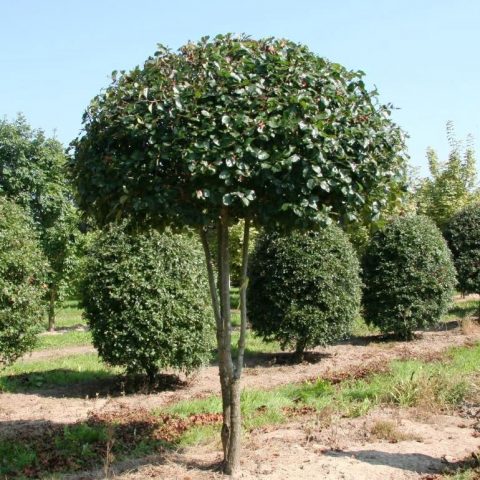Content
Among the ornamental fruits and shrubs, hawthorn occupies a special place. Its fruits, leaves and flowers have always been used in folk medicine. Arnold's hawthorn is a large-fruited variety common in many regions.
Breeding history of the variety
This plant was bred in America, but it also feels great in Russia. The plant has a number of advantages for which it is appreciated by Russian gardeners. At the same time, the plant has not yet been entered into the State Register of Varieties.
Description of Arnold's hawthorn
It is a woody plant that reaches 6 m in height. The fruits are large, 2-3 cm in diameter. The crown of a tree is up to 5 meters wide, wide, asymmetrical, transparent, there are zigzag branches. The thorns in this variety reach 9 cm in length, which is much longer than in most other varieties.
Fruit ripening occurs earlier, as well as their fall. The fruits are large, the pulp is juicy, sweet and sour taste. Each fruit contains 3-4 seeds. Ripens in September, and Arnold's hawthorn blooms in May.
The leaves of the tree are broad, ovoid, with jagged edges. In autumn, foliage changes color from bright green to yellow or purplish yellow.
Variety characteristics
The main advantage of this variety is its simplicity. In addition, Arnold's hawthorn is considered to be durable. Its age reaches 120 years. The variety is used not only as lone plantings, but also for hedges, as well as decorative group plantings.
Drought resistance and frost resistance
The tree is drought-resistant and able to withstand frost. As for watering, it is enough to water the shrub 2 times a month. In too dry summers, the frequency of watering can be increased up to three times.
And also the plant is frost-resistant, which allows it to be grown in almost all climatic zones. It is necessary to insulate for the winter only in the northern regions, where sub-zero temperatures keep below 40 degrees for a long time.
Productivity and fruiting
The berries of this variety ripen at the beginning of September. The first yield occurs approximately 5 years after planting. An adult tree, with proper agricultural technology, gives 6 buckets of hawthorn fruits per season. The berries reach 3 cm in diameter and have several seeds.
Disease and pest resistance
Arnold's hawthorn requires protection from pests and diseases. The most common diseases that these plants are susceptible to:
- Powdery mildew - expressed in the appearance of white or gray bloom on the leaves. As a result, the leaves curl. For treatment, double treatment with known fungicides is used.
- Ocher spot - a common disease that leads to early drying and leaf fall.
- Brown spot - also destroys leaves.
When the first symptoms of any disease appear, the plant must be treated with a fungicide.
Of the pests for Arnold's hawthorn, the most dangerous are: aphids, scale insects, leafworms and hawthorns.
Advantages and disadvantages of the variety
Arnold's hawthorn is noticeable for its gorgeous crown. This tree can be up to 6 meters high. In addition, it has a number of other advantages:
- larger fruits;
- unpretentious in care;
- long-liver;
- several breeding methods;
- resistant to frost and drought;
- suitable for use in landscape design.
But the large-fruited variety also has its disadvantages:
- long spikes up to 9 cm;
- susceptible to many diseases;
- the first harvest only after 5 years.
Planting and caring for Arnold's hawthorn
In order for the American hawthorn tree to grow for more than 120 years, while bearing fruit with high quality, it is imperative to observe the basic rules of agricultural technology. Caring for Arnold's hawthorn is not difficult, but there are nuances that must be taken into account. Then a beautiful, spreading tree with large fruits will stand on the site for more than a decade.
Recommended timing
You can plant hawthorn seedlings in spring and autumn. Autumn planting is considered more acceptable. In autumn, planting dates are calculated so that the seedling has time to take root before frost. The best option is to plant during the leaf fall.
Choosing a suitable site and preparing the soil
When choosing a place, it should be borne in mind that Arnold's hawthorn loves sunny areas, and in the shade it bears fruit and blooms worse.
It is necessary to plant a seedling in the following mixture:
- 2 parts of sod land;
- 2 parts of humus;
- 1 part peat;
- 1 part sand.
And also 40 g of lime must be added to the planting pit. In general, it is best to check the acidity of the soil. It should be at 8 pH.
At the bottom of the pit, a drainage layer is needed, which consists of gravel and river sand. Both components in an equal amount in a layer of 10 cm.
The hole should be of such a diameter that the root system of the seedling fits and is free.
What crops can and cannot be planted nearby
It is important to plant a tree correctly on the site, taking into account the proximity of other plants. In this case, you can both increase fruiting and improve the condition of the tree, and vice versa.
Do not plant next to hawthorn: apple, pear, plum, cherry, as well as other fruit crops that have common pests.
Excellent for the neighborhood with Arnold's hawthorn, other varieties of hawthorn, its hybrid varieties, as well as dogwood and other berry crops.
Selection and preparation of planting material
Arnold's hawthorn is planted with seedlings. You can do this with seeds, but they will grow and develop longer, and fruiting will come later. Two-year-old seedlings with a healthy root system are suitable for planting. If the hawthorn has side shoots, they should be cut off before planting.
Landing algorithm
Arnold's hawthorn is planted in the planting pits at a distance of 2 m from each other. The seedling is placed in the center of the prepared hole and covered with earth. The soil must be tamped. The root collar should be flush with the ground.
After planting, be sure to pour at least a bucket of water under the seedling. After planting, you need to remember that young trees need careful watering.
Follow-up care
In order for Arnold's large-fruited hawthorn to grow and develop beautifully and delight its owner with a rich harvest, it is important to properly care for it.
- Watering... The hawthorn should be watered once a month at the rate of 15 liters of water per tree. Younger plants need to be watered a little more often, especially during dry summers. If the summer is rainy enough, then no watering is required at all.
- Top dressing... To get a rich harvest, you need to take care of good feeding. Every spring, he thinks to bring in nitroammofosk. Before flowering, a bucket of liquid mullein is introduced under each tree for feeding.
- Pruning... There are two types of pruning: sanitary and shaping. Sanitary pruning is done annually. Its goal is to remove all sick, dried, and also frozen branches.For formative pruning, do not prune more than 1/3 of the length of the shoot. If you cut more, the plant will not be able to bloom and bear fruit normally.
- Preparing for winter... The plant is considered frost-resistant, and therefore does not require special preparation. It is enough to mulch the root zone with straw or hay.
Diseases and pests, methods of control and prevention
In the hawthorn Arnold, in the description of the variety, several diseases are indicated to which the tree is susceptible.
- Rust... If suspicious spots are found, diseased shoots must be cut off immediately to avoid spreading the infection.
- Powdery mildew - Spraying with modern fungicides is imperative.
In addition to diseases, hawthorn is susceptible to attack by pests. From them, as a preventive measure, a soap solution helps, as well as a tobacco solution, which is supposed to spray a tree a couple of times a season.
After flowering, you can spray the tree again if the infestation is too severe.
Application in landscape design
Arnold's hawthorn in the photo and on the site looks very beautiful. This tree is used not only for obtaining tasty fruits, but also for decorating the local area. It is used in landscape design both in single plantings and in group plantings. Hawthorn looks beautiful in rock gardens, as well as in curly structures. Its crown can be formed in the form of a ball, pyramid, rectangle.
Conclusion
Arnold's hawthorn is an American variety known for its useful berry, which has many medicinal properties. Such a tree is suitable for use in landscaping. The fruits are quite large, the yield of this variety is large. It is important to properly follow the rules of agricultural technology and water, feed and cut a plant on time, which can stand on the site for more than 120 years.
Testimonials













